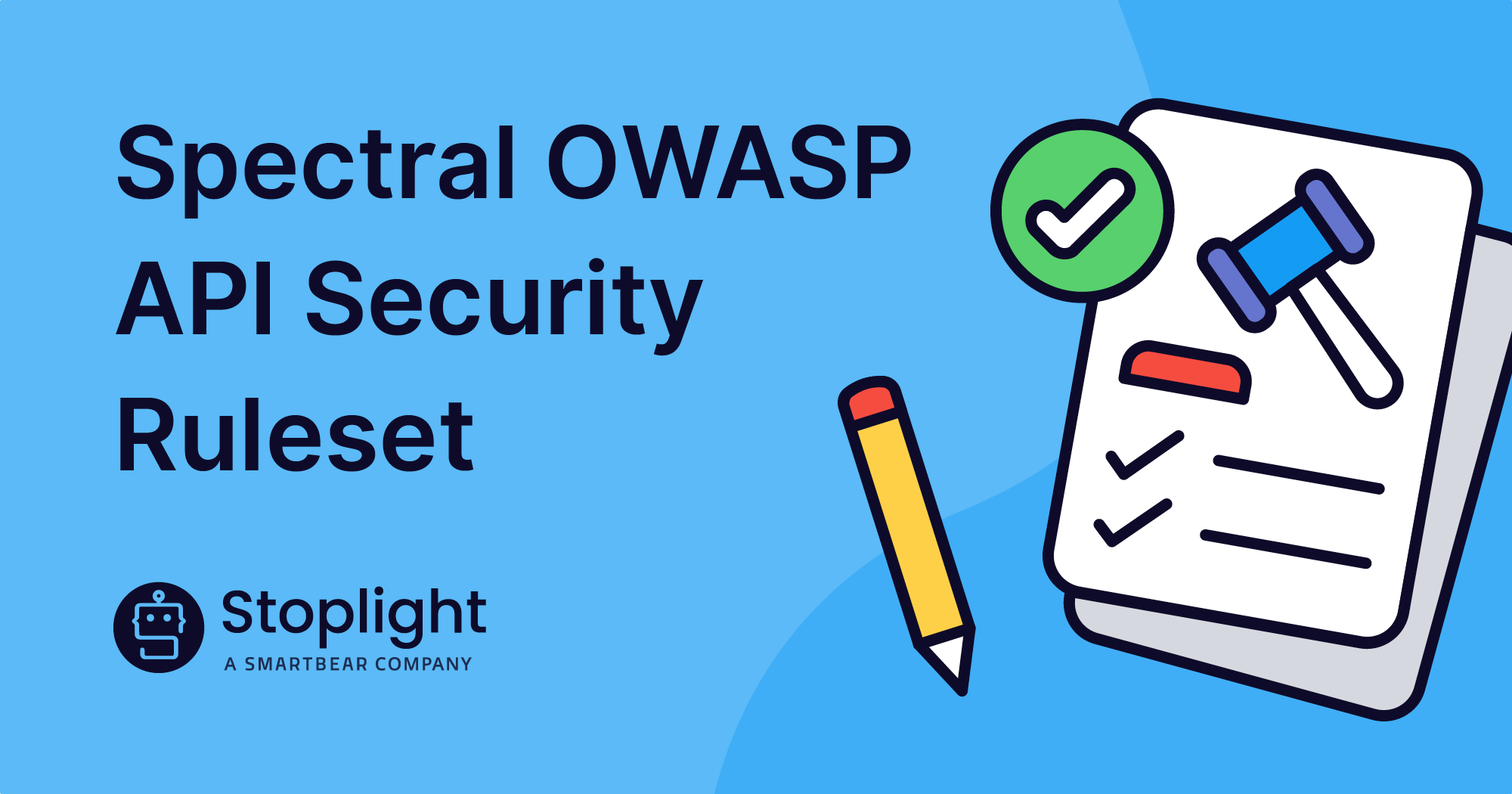Whether you’ve been building APIs for years or are just beginning to plan an API program, you know there are many important decisions you need to make about architecture, tooling, documentation, security, lifecycle management, and more.
At some point, when your internal resources are getting stretched thin by decision fatigue, it may be wise to bring in an external API consultant. We recently sat down with API expert James Higginbotham of LaunchAny. Drawing on his many years of experience in APIs and microservices consulting, he talked with us about what to consider before you hire a consultant so that you can get the most benefit.
Align On Goals Now
A common pattern Higginbotham sees is organizations make an initial investment in an API program but don’t follow through on developing long-term strategy and infrastructure. The API economy has been getting a lot of attention in recent years, but following trends without considering the big picture of your business is not a plan for success. Before you commit resources to build or transform an API program, get your teams aligned on goals and build executive buy-in for the long haul.
Start by understanding where your APIs fit into your value streams. As Higginbotham says, “If your executives aren’t fully bought in, then at some point, the funding is going to get ripped out.” But if you can clearly quantify the value of your APIs, you are in a better position to argue. “It’s making sure that the value streams are recognized. You can track that value and get buy-in to do what’s necessary to formalize a program to meet those needs.”
For many SaaS companies, especially those that started with APIs as a primary offering, APIs are a product, making it easy to identify their value. It can be harder to pinpoint the value of enterprise APIs, which are part of a much larger ecosystem of services and technologies. Higginbotham emphasizes understanding the root of what’s driving a desire to transform your API program:
“When I start working with a new client, I try to understand what’s driving the desire for a new direction. Usually, it’s rooted in a transformation of some sort. If it’s a product company, they’re investigating what it is that customers really want to do. That tells you what’s most valuable in your product. On the enterprise side, it’s more about what your end goal is. Are you transforming your business and building more of a digital front door to your organization? Are you just trying to be more efficient and effective at automating your partner integrations? Or, do you have demand from your customers for a certain level of integration? Are you building a marketplace? Look for the value streams.”
API Transformation Starts With Education
Higginbotham likens the API transformation process to education – both require clarity about goals. For children or early-career learners, we emphasize general concepts and skills. But for adults and professional learners, “You’re teaching to a deliverable or an outcome. They’ve already got this thing in mind. From an API product perspective, teams have a sense of what they need, and are trying to figure out how to get all the pieces so that they can build it.” Setting a general goal to “make your APIs better” isn’t going to get you where you want to go. Different programs have different needs, and determining what success looks like for your organization is crucial.
Once you have goals, the next step is to plan how you’ll monitor progress. Maintaining executive buy-in is going to require that you document the impact of your transformation process. Remember that the end goal is happy API consumers and a sustainable business model. Higginbotham meets many API designers who are excited to show off the complexity of their implementations but lack a consumer orientation:
“I have to ask, but what are you doing for the consumer? There’s a big miss there. From the executive side, they’re not really owning the program. They think of it as a “tech thing”, and they haven’t really realized that there’s a lot more to it than that. That causes problems because they’re not pushing for measurements, metrics, and goals around the APIs.”
An API consultant can certainly help with this phase of work. If you can make headway on goals and metrics before engaging a consultant, it will set you up for a more productive relationship.
Look for a Consultant Who Will Listen and Learn
In an ideal world, every company seeking a consultant would be able to find someone whose expertise perfectly matched their goals. In practice, constraints like availability, budget, and timelines make the matching process more challenging. A good consultant will come into an engagement with open ears and an open mind, knowing that collaboration and communication are more important than a perfect match on paper. Per Higginbotham, “The consultant should be asking you what success looks like.”
You can expect a team from a “Big Three” firm to work independently and have certain fixed deliverables relating to high-level analysis and direction. In some cases, this is a good fit when there is a need to build executive buy-in and set overall strategy.
Higginbotham gives an example of a company he has worked with: after a year with a Big Three firm, they developed a clear strategic vision for their API programs. But, they had no tactical steps to implement that strategy. He came in and helped the client translate the vision into roles and processes that would work with their company culture.
For most companies, Higginbotham advocates for an individualized approach: “You, as the organization, have to own this long term. You’re going to run this. We’re here to coach you; we’ll take the lead when we need to and then step back as we need to. We’ll work shoulder-to-shoulder, but our job is not to entrench ourselves forever. Our job is to be successful and move on.” A consulting engagement should be short-term and focused on your needs. Evaluating where you can be flexible and where you can afford to take risks can also help you get a better return on your consulting investment.
If you’re looking at consultants who are less established, your first instinct may be to seek someone with specific technical skills. Higginbotham suggests prioritizing functional experience that matches your goals:
“If I’m looking for someone to help me with developer relations, marketing and product definition, then I’m looking for someone who’s been a product manager of a significant developer-focused product in the past. Even if they don’t have API experience, if they are used to working with developers to build tools, or if they stewarded a significant Open-Source Initiative and they had to work with developers all the time, then that’s a strong start.”
Someone else that might be a good candidate is someone who’s managed a budget because they will have a good understanding of what it means to have to justify ROI, justify adding new features, or expand API teams in a certain direction. They know how to do market assessments and headcount allocation.”
Choose a Specialist Who Meets Your Unique Needs
Higginbotham emphasizes how important it is to find someone with the right expertise: “It might seem obvious, but you have to find the specialist who has the background you need.”
Expertise can come in the form of a “product mindset”, deep experience working with engineering teams, or in-depth technical expertise. For example, a company may want to find a consultant who is knowledgeable about the specific technologies in their software stack. Security consultants are an example of a different type of specialist that leverages their knowledge of security best practices to make architectural recommendations independent of specific technologies.
Most of the time, you will want a consultant who is technology-agnostic and can understand the best architecture for your needs. Per Higginbotham, “When you hire an API consultant, they should be able to discern between different architectural styles, say between using REST and gRPC, and assess recommendations.” Still, you may want to hire someone who is an expert in a particular technology, say GraphQL or IBM API Connect, when optimized implementation is important for your product
The expertise you need may be related to a business domain, such as healthcare, financial services, insurance, or other highly regulated industries. Hiring a consultant who already has experience in your domain will eliminate a lot of frustration and miscommunication.
Or, as Higginbotham says, “If your organization has deep domain expertise, and you’re hiring someone that doesn’t have that, you better be ready to teach. You better have resources and the ability to teach and be patient with the person.”
Follow Through On Your Investment
A consulting engagement is a short-term commitment with a long-term goal. In fact, some of the ideas Higginbotham recommends for the start of your consultant search see their payoff only after an engagement ends.
When you are weighing the different expertise of two or more consulting firms, what you are really considering is what parts of the transformation you want to own. You know your organization better than any consultant, and it’s important to reflect on your strengths first.
Higginbotham emphasizes executive buy-in because he knows how much long-term commitment is required to make an API transformation successful. He points to two areas that require special attention– executive ownership and workflow. Teams need to consider the following:
- Who owns these APIs?
- Does my Director of Product oversee the API as well?
- Have I added someone new to the team to manage it?
- Who do they report to?
- How do we ensure they have a say in the decisions that will affect API development?
Changes in project management practices may also be required. The workflow will need to adjust to new requirements for API teams. An API transformation should include new logging and metrics – you’ll need a plan for how those are monitored and evaluated and how that informs your development calendar.
The Two-Way Nature of APIs
Finally, Higginbotham says it’s essential to remember the two-way nature of APIs. Most consulting engagements have some goal related to increasing API traffic. But your work is never done, especially if you are moving from a customized SaaS product to an API. As you gain more users, you’ll need to adapt to new practices for updates and customization.
“We can’t just change it like we could before. We no longer own both sides of the equation. We have to provide training in how our API design and product management is different from how we would manage a SaaS product. We can’t just toss a new API out and tell consumers to talk to our React front end to make their feature work. We have to think about what any changes mean for the long-term ownership of the API. What are we willing to support? What do our users depend on? If we get a quick fix out the door, then the next iteration, where we start really diving in, becomes a problem. The API is live, people are using it, and I can’t break it for others.”
Finding a consultant who can work with you to identify your goals and craft a strategy to meet your needs can be a terrific investment. With some planning and self-reflection, you can maximize the value you’ll receive and begin a commitment with confidence!

